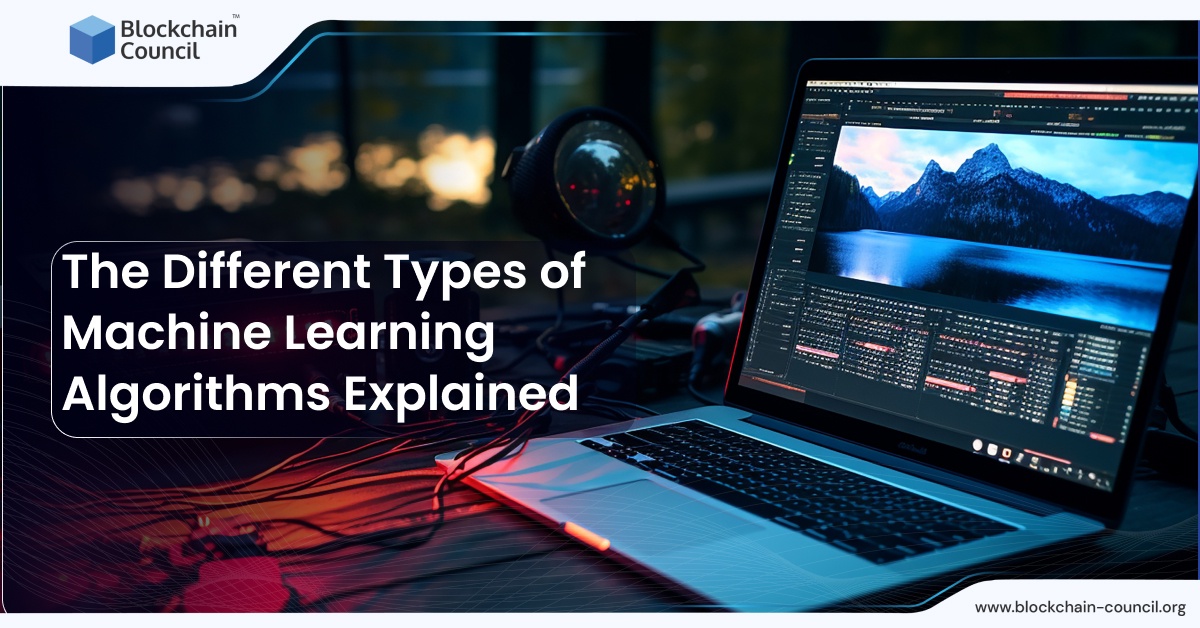The term 'machine learning' is frequently misused interchangeably with Artificial Intelligence, although it is essential to clarify that machine learning is a distinct subfield within AI. Additionally, machine learning is often synonymous with predictive analytics or predictive modelling.
Coined by the American computer scientist Arthur Samuel back in 1959, the term 'machine learning' specifically denotes a computer's capacity to learn without explicit programming.
At its most fundamental level, machine learning relies on programmed algorithms that receive and analyze input data, foreseeing output values within an acceptable range. As these algorithms continuously ingest new data, they adapt and optimize their operations, progressively enhancing their performance and acquiring a form of 'intelligence' over time.
Understanding Machine Learning Basics
Machine learning employs programmed algorithms to analyze input data, predicting output values within an acceptable range. As new data is introduced, these algorithms refine their operations, progressively enhancing their performance and developing a form of 'intelligence' over time.
The Four Pillars of Machine Learning Algorithms
1. Supervised Learning
Supervised learning involves teaching machines through examples. The algorithm is provided with a known dataset containing desired inputs and outputs. The machine identifies patterns, learns from observations, and makes predictions. This iterative process continues until the algorithm achieves a high level of accuracy. Classification, regression, and forecasting are key components of supervised learning.
- Classification: Categorizing new observations based on observed values, such as filtering emails as 'spam' or 'not spam.'
- Regression: Estimating relationships among variables, focusing on one dependent variable and multiple changing variables.
- Forecasting: Predicting future outcomes based on past and present data, commonly used for trend analysis.
2. Semi-supervised Learning
Semi-supervised learning utilizes both labelled and unlabeled data. Labelled data contains meaningful tags, enabling the algorithm to understand it, while unlabeled data lacks such information. This hybrid approach allows machine learning algorithms to learn and label unlabeled data.
3. Unsupervised Learning
In unsupervised learning, algorithms study data to identify patterns without human-provided answers. The algorithm interprets large datasets, organizing them to describe their structure. Clustering and dimension reduction are prominent tasks under unsupervised learning.
- Clustering: Grouping similar data based on defined criteria, is useful for segmenting data into groups and finding patterns.
- Dimension Reduction: Reducing the number of variables considered to extract essential information.
4. Reinforcement Learning
Reinforcement learning focuses on regimented learning processes. The algorithm is provided with a set of actions, parameters, and end values, exploring different options and possibilities. Through trial and error, the machine learns from past experiences, adapting its approach to achieve optimal results.
Choosing the Right Machine Learning Algorithm
Selecting the appropriate machine learning algorithm depends on factors such as data size, quality, diversity, and the desired insights. Accuracy, training time, parameters, and data points also play crucial roles. Even seasoned data scientists experiment with various algorithms to determine the best fit for a given scenario.
Common Machine Learning Algorithms Unveiled
Choosing from an array of machine learning algorithms involves understanding their applications. Here are some prevalent algorithms explained:
Naïve Bayes Classifier Algorithm (Supervised Learning - Classification)
Based on Bayes' theorem, it classifies values independently, predicting a class/category based on given features and probabilities. Despite its simplicity, it often outperforms more sophisticated classification methods.
K Means Clustering Algorithm (Unsupervised Learning - Clustering)
Categorizes unlabeled data by finding groups within the data through iterative assignment based on provided features.
Support Vector Machine Algorithm (Supervised Learning - Classification)
Filters data into categories by building a model using a set of training examples marked for each category.
Linear Regression (Supervised Learning/Regression)
Explores relationships between two continuous variables, providing insights into their connections.
Logistic Regression (Supervised Learning – Classification)
Estimates the probability of an event occurring based on previous data, commonly used for binary outcomes.
Artificial Neural Networks (Reinforcement Learning)
Comprises interconnected units arranged in layers, inspired by biological systems like the brain. Ideal for modelling non-linear relationships in high-dimensional data.
Decision Trees (Supervised Learning – Classification/Regression)
Illustrates possible outcomes of a decision through a tree-like structure, with each node representing a test on a specific variable.
Random Forests (Supervised Learning – Classification/Regression)
An ensemble learning method that combines multiple algorithms for superior results, particularly effective in classification and regression tasks.
Nearest Neighbours (Supervised Learning)
Estimates the likelihood of a data point belonging to a particular group by analyzing the data points around it.
The Vital Role of AI Certification Courses in Shaping Future Tech Professionals
What is AI Certification?
In an era dominated by technological advancements, AI certification courses emerge as crucial pathways for professionals seeking to master the intricacies of Artificial Intelligence. But what exactly is AI certification, and why has it become pivotal in shaping the landscape of future technology?
AI certification signifies a formal acknowledgement of an individual's proficiency in harnessing artificial intelligence. As the demand for AI-driven solutions escalates across industries, from healthcare to finance, possessing AI certifications has become a requisite for professionals aspiring to stay at the forefront of technological innovation. An AI certification exam is a benchmark that evaluates a candidate's understanding of AI concepts, programming languages, and their practical application, ensuring a standardized level of expertise.
The Multifaceted Importance of AI Certification Courses
AI expert certifications play a multifaceted role in the professional realm. They not only equip individuals with in-depth knowledge of AI frameworks, algorithms, and applications but also validate their ability to contribute meaningfully to the ever-evolving field of artificial intelligence.
For aspiring AI developers, an AI developer certification course is a strategic move to deepen their understanding of designing and implementing AI solutions. These courses often include hands-on projects and real-world applications, ensuring that certified individuals can seamlessly integrate AI into various domains. Meanwhile, AI chatbots have become integral in enhancing user experiences, prompting a surge in the demand for certified chatbot experts. A chatbot certification validates one's proficiency in designing, implementing, and optimizing AI-driven chatbots, making them invaluable assets in customer-centric industries.
Navigating the Future with Certified Expertise
In a world increasingly shaped by AI technologies, professionals armed with AI certifications are better positioned to lead innovation and drive transformative change. The importance of AI developer courses extends beyond individual career growth, they contribute to the overall advancement of AI as a transformative force in shaping the future of technology.
Conclusion: Navigating the World of Machine Learning
In this dynamic landscape of technology, understanding the nuances of machine learning is very important. From the fundamental concepts of supervised and unsupervised learning to the practical applications of various algorithms, the realm of machine learning is both vast and intricate. Businesses can harness the power of these algorithms to derive valuable insights from their data, paving the way for informed decision-making.
For those seeking to enrol in the best AI certification courses in India, Blockchain Council provides the best AI prompt engineer certifications, empowering individuals with the expertise needed to navigate the intricate intersection of artificial intelligence and blockchain technology. This platform serves as a beacon for professionals, offering comprehensive insights and certifications to thrive in the evolving landscape of technology and contribute to a better world.


No comments yet